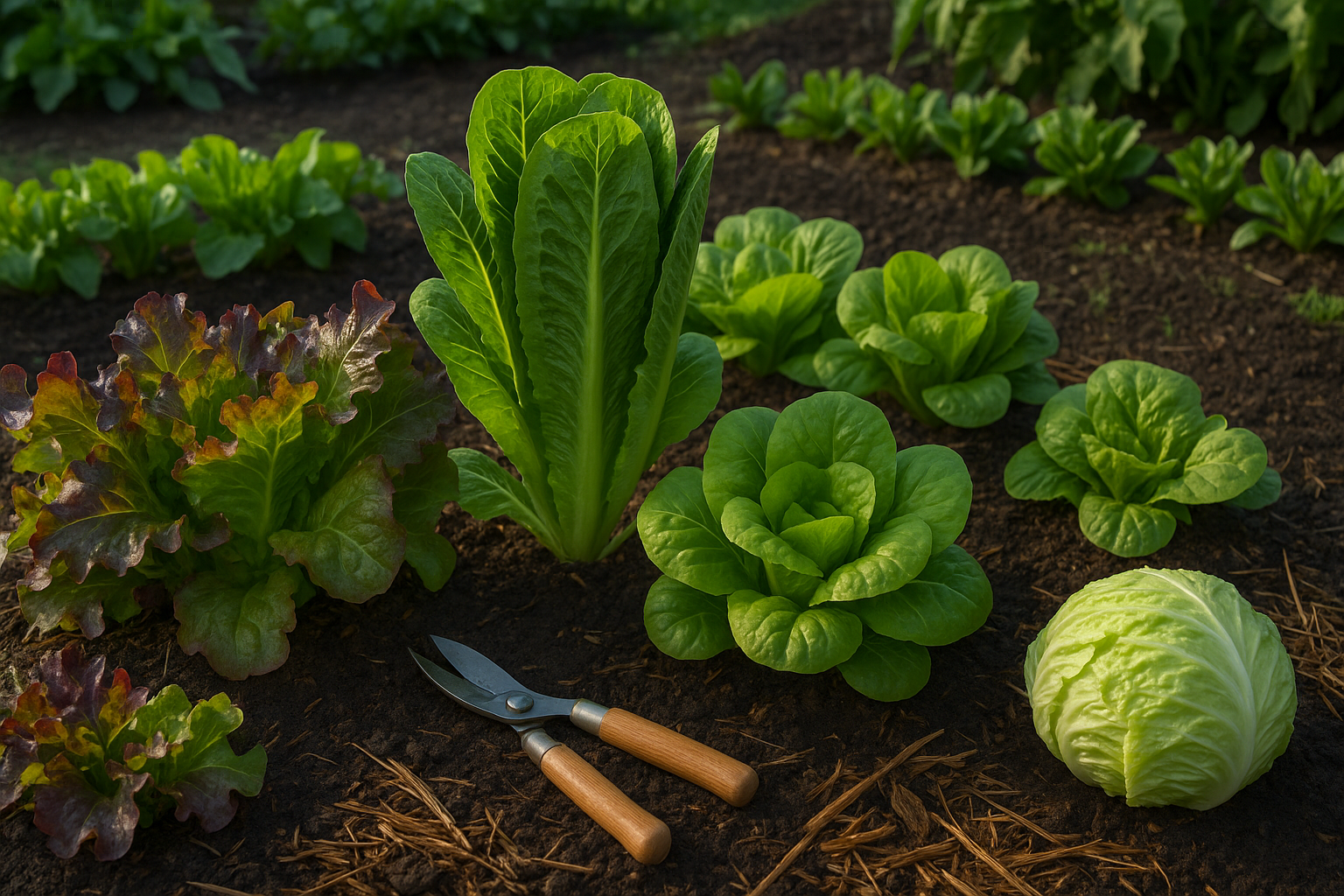Understanding Lettuce Types and The Best Time to Harvest
When it comes to growing lettuce, knowing the different types—leaf, romaine, butterhead, and crisphead—is key to determining the best time to harvest for peak flavor and quality.
Leaf lettuces, like Red Leaf or Green Salad Bowl, grow loose and mature quickly. Gardeners can snip outer leaves as soon as they are big enough to eat, typically when the leaves reach about 4-6 inches and have a vibrant color and crisp texture.
Romaine lettuces, such as Paris Island Cos, form upright heads and are ready to harvest when the leaves reach full length but before the inner ribs become overly firm. This indicates the plant is still tender rather than bitter or tough.
Butterhead varieties, like Boston and Bibb, produce loose, soft heads with buttery leaves. They are ready when the heads feel full but still delicate to the touch—gently squeezing the core should give slightly, while the outer leaves remain a rich green.
Crisphead lettuces, including Iceberg, take the longest to mature and form tight, rounded heads. Harvest when the heads are firm and heavy for their size, but before the outer leaves turn yellow or wilt.
In all cases, precise timing is vital for the best taste and continued plant health—a head left too long can quickly bolt (send up a flowering stalk) or become bitter.
Look for crisp edges, vibrant coloration, and a lack of limpness, as well as the appropriate firmness for each type. Gardeners often find that harvesting early in the morning yields the freshest, crunchiest leaves since plants have had the night to rehydrate.
Being attentive to these simple visual and tactile cues ensures your lettuce harvest is as delicious and bountiful as possible.
Step-by-Step Guide to Harvesting Leaf Lettuce
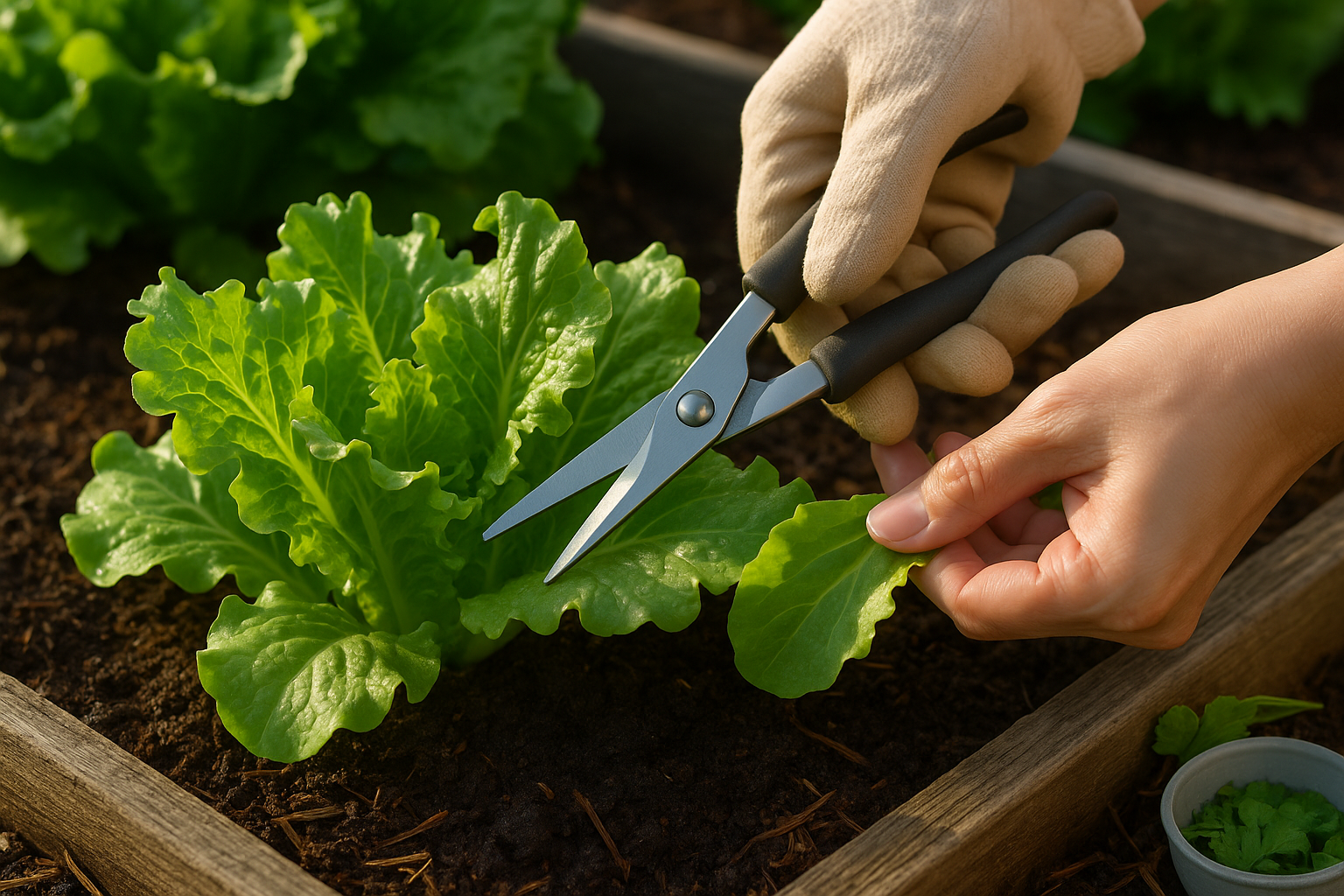
The cut-and-come-again method is a simple, sustainable way to enjoy a season-long supply of fresh leaf lettuce. To use this approach, wait until your plants are at least four to six inches tall, then use clean, sharp scissors or garden shears to snip the outermost leaves about one inch above the base. Avoid cutting into the central growing point to allow the plant to keep producing new leaves.
Start by harvesting just a few leaves from each plant, especially if you’re aiming for baby greens, which tend to be more tender and mild. For an ongoing supply, aim to harvest every one to two weeks; this frequency gives the plant time to regrow without stressing it.
Be gentle when cutting, and avoid tearing or pulling, which can damage the roots or cause disease. If you prefer crispier, slightly more robust greens, let some leaves reach their full mature size before cutting, but don’t wait too long, or the leaves may become bitter or tough—generally, mature leaves are ready when they reach six to eight inches.
Rotate your harvests among different rows or sections of your garden beds so each plant has a chance to recover fully. This method not only maximizes your yield but also encourages a continuous harvest—perfect for salads at any time of the season.
Remember to water your lettuce after each harvest and mulch lightly to keep the soil cool and moist, helping the plants rebound quickly and stay healthy.
Harvesting Head Lettuce
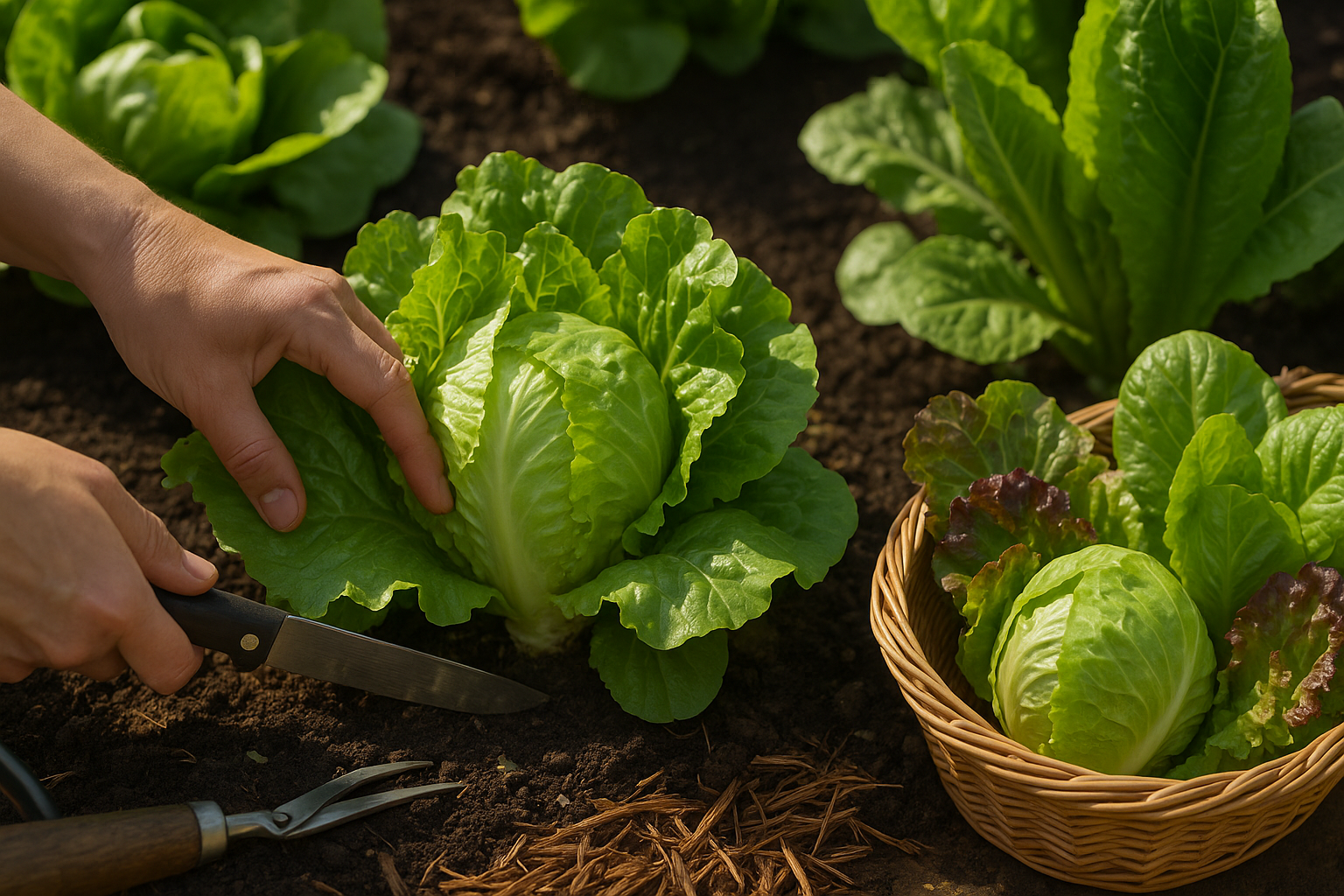
Knowing exactly when to harvest head lettuce is key to enjoying crisp, delicious greens from your garden. Look for heads that have reached the typical mature size for their variety — romaine usually forms a tall, tight head, while butterhead and crisphead types should feel firm when gently squeezed.
A good sign your lettuce is ready is when the outer leaves lose their floppy appearance and the head stands upright and full. Check for firmness, but avoid waiting too long — a head that’s starting to stretch upward (called “bolting”) with a thickening central stalk or producing a flower bud is past its prime and may taste bitter.
To harvest, take a clean, sharp knife or garden shears and cut the lettuce head at the base, as close to the soil as possible, being mindful not to disturb the roots of nearby plants. For tight crisphead and butterhead types, removing any damaged or outer leaves right away helps prevent pest and rot issues.
With romaine, you can also try the “cut-and-come-again” method by snipping the outer leaves first, letting the plant continue to grow for a second harvest.
Always handle lettuce gently; bruising can reduce shelf life. Work in the cool of early morning to lock in freshness and reduce wilting. If you’re harvesting during hot weather, immediately place the heads in the shade, rinse them in cool water, and refrigerate promptly for the best taste and crunch. These careful steps ensure your harvest is as fresh and flavorful as possible.
How to Avoid Bitterness and Bolting
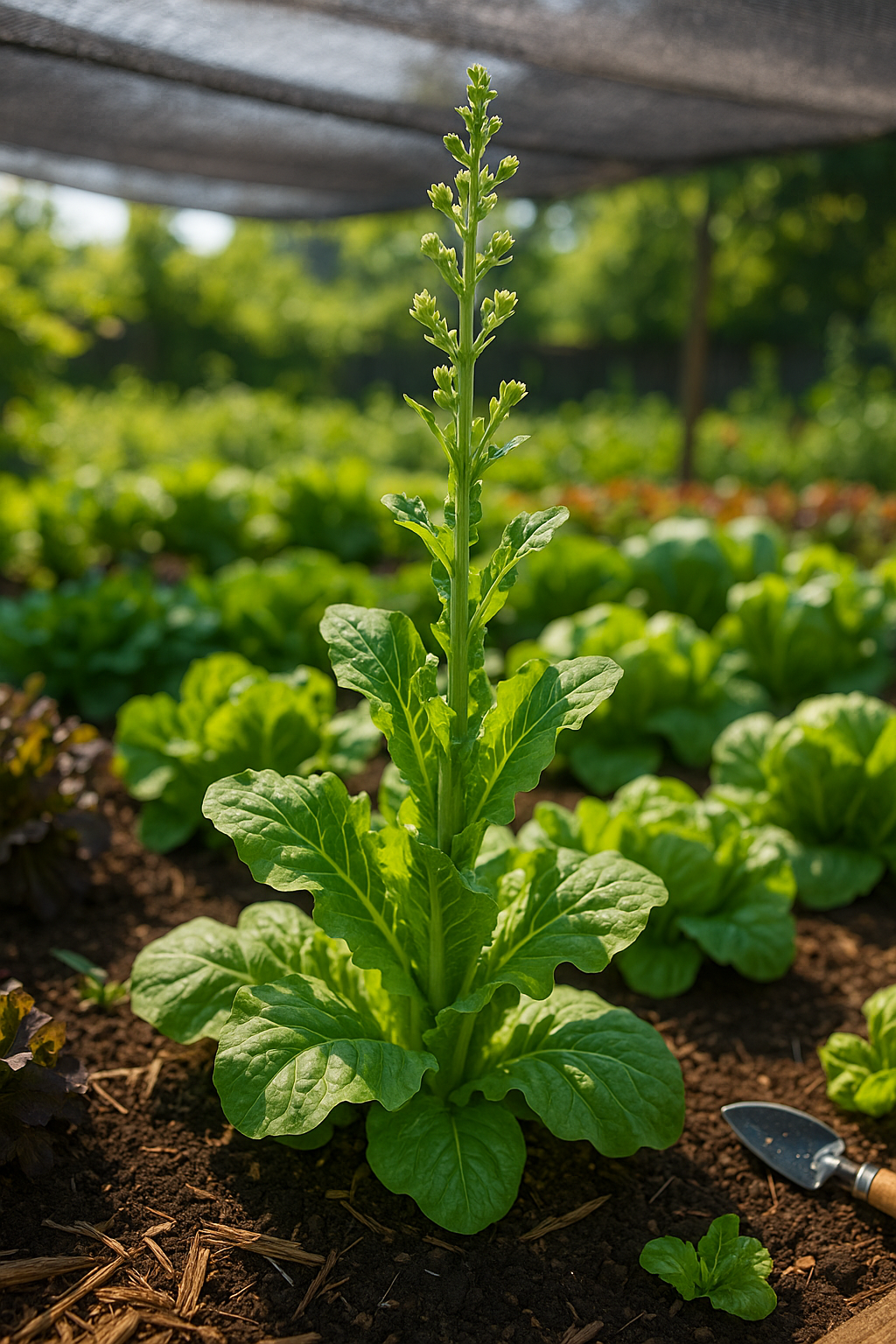
Bolting is a gardening term that describes when leafy vegetables like lettuce, spinach, and cilantro quickly send up a flower stalk and go to seed. This often makes the leaves taste bitter and the texture tough. This natural process is triggered by conditions such as rising temperatures, longer daylight, crowding, or inconsistent watering.
Once a plant bolts, its energy shifts from producing tender leaves to forming seeds, leading to unpleasant flavor changes and reduced quality.
Tips to Prevent Bolting and Bitterness
- Plant cool-weather crops early in spring or late summer, as most prefer temperatures between 45°F and 75°F.
- Keep the soil consistently moist but not waterlogged; avoid letting it dry out, since water stress encourages bolting.
- During heat waves, use shade cloth or plant taller crops nearby to provide cooling shade, helping maintain ideal conditions.
- Mulching can regulate soil temperature and moisture, reducing stress on plants.
Dealing With Bolting Plants
If you notice a plant starting to bolt—marked by a lengthening central stem or budding flowers—harvest as many leaves as you can immediately. They’re less bitter early in the process.
Some bolted plants, like cilantro and arugula, can still be used for their flowers or seeds, which add unique flavor to dishes. You might also consider allowing a few plants to fully bolt for seed saving or to attract pollinators to your garden.
By staying vigilant and acting quickly, you can stretch your harvest and minimize waste—even when nature has other plans.
Promoting Ongoing Yields
Proper aftercare is essential for getting multiple harvests from your leafy greens or herbs. After each cut, continue regular watering to keep the soil consistently moist—avoid letting the ground dry out, as this can stress the plant and slow regrowth. Fertilize lightly every few weeks with a balanced, water-soluble fertilizer to give plants the boost they need for continuous growth.
Stay vigilant with pest control by checking both sides of leaves for insects or disease—catching issues early makes treatment much easier. Typically, you can expect to harvest new leaves every 2-3 weeks during the growing season, but watch for signs of plant decline, such as yellowing leaves, slower regrowth, or stems becoming woody; these signs mean the plant may be aging out of peak production.
If your plants suddenly stop producing or the leaves look tough or pale, try thinning crowded beds for better airflow, amending the soil with compost, or adjusting sunlight exposure. Removing dead or damaged foliage also encourages fresh growth. If pests or disease are persistent, consider rotating crops or using organic pest control methods.
With a little ongoing care and quick intervention when issues arise, you can extend the productive life of your plants and enjoy repeated, high-quality harvests.
Best Practices for Storing and Enjoying Freshly Harvested Lettuce
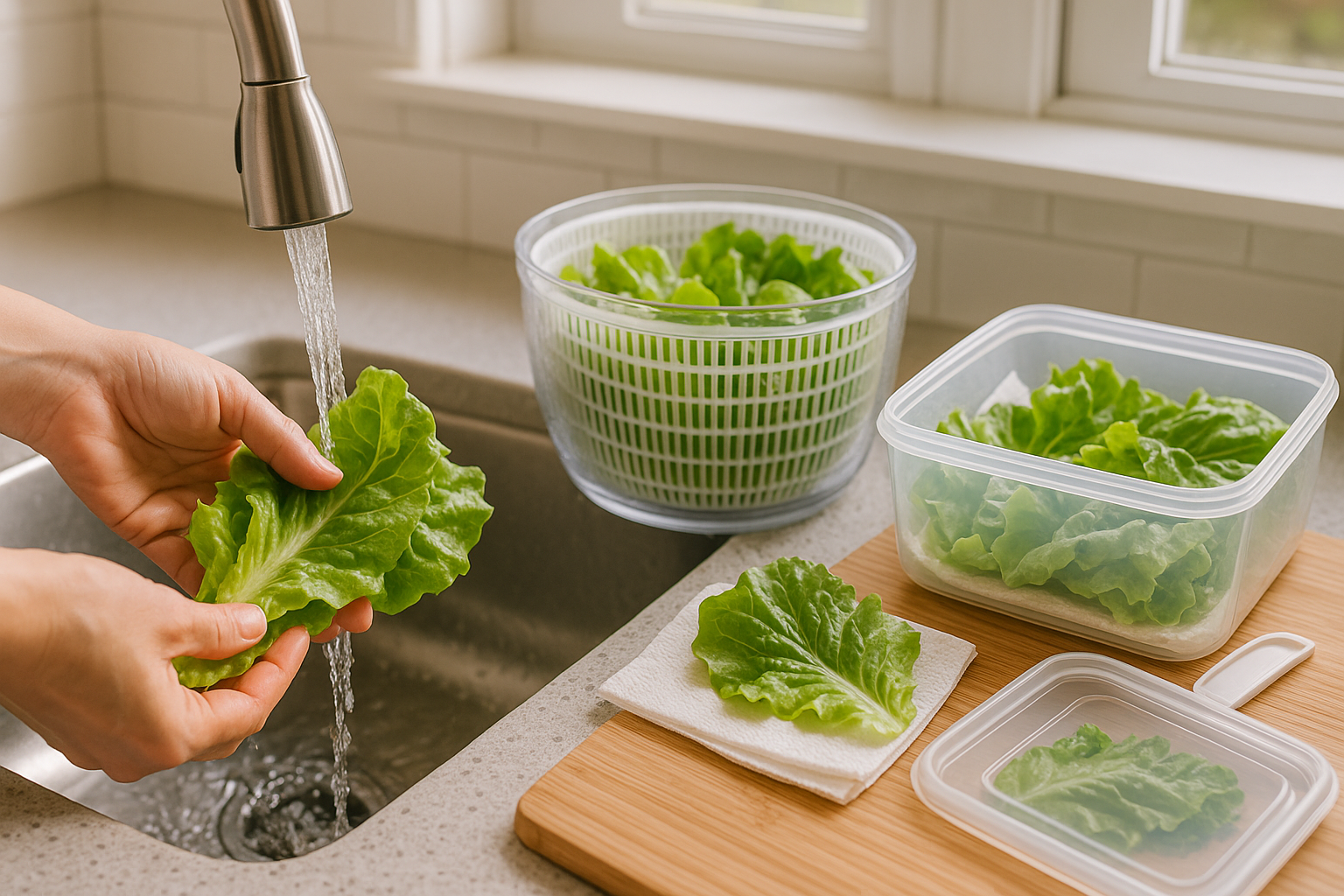
Right after harvesting lettuce, handle it gently to preserve its crispness and vibrancy. Start by rinsing the leaves under cool water to remove dirt and bugs, then use a salad spinner or pat them dry with a clean kitchen towel—excess moisture can lead to sogginess and spoilage.
For storage, line an airtight container or resealable plastic bag with paper towels, layer the dry lettuce inside, and top with another paper towel to wick away any lingering moisture. Store this container in your fridge’s crisper drawer, which helps maintain the perfect humidity for leafy greens. Replace the paper towels every couple of days for peak freshness; most lettuce will stay crisp for up to a week using this method.
To make the most of your harvest, try tossing fresh leaves with olive oil, lemon, and a pinch of sea salt for a simple salad, or layer them into sandwiches, wraps, or tacos for a cool, crunchy bite. You can also use sturdy varieties like romaine as a healthy alternative to tortilla chips—just scoop your favorite dip right onto the leaf for a refreshing snack that puts your homegrown lettuce front and center.
